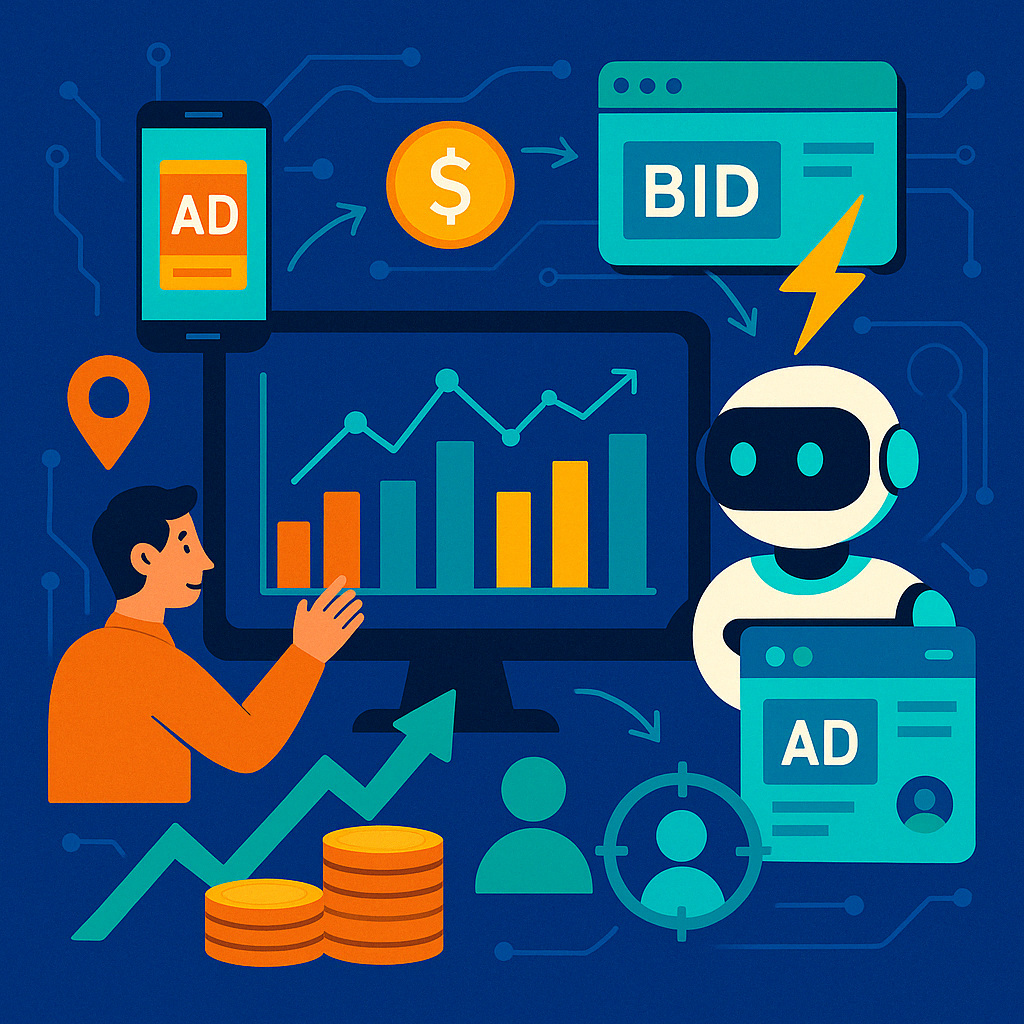Programmatic display advertising has revolutionized the way businesses approach digital advertising. Leveraging sophisticated algorithms and real-time bidding, programmatic advertising platforms enable businesses to connect with their target audience with precision, scale, and efficiency. However, with so many programmatic display advertising platforms available in the market, it can be overwhelming for businesses to choose the right one for their needs.
This article will explore 19 programmatic display advertising platforms businesses should consider for their next advertising campaign. Each platform offers unique features and advantages to help companies achieve their advertising goals, whether brand awareness, lead generation, or sales conversion. From well-established players like Google Ads and Facebook Ads to up-and-coming platforms like Choozle and Simpli.fi, we have compiled a list of platforms that suit different budgets, industries, and advertising objectives. So, let’s dive in and discover the best programmatic display advertising platforms for your business!
What Are Programmatic Advertising Platforms?
Programmatic advertising platforms are automated systems that streamline the buying and selling of digital ad inventory. These platforms use complex algorithms and machine learning to analyze vast amounts of data to make real-time purchasing decisions. By leveraging data on user demographics, behavior, and preferences, programmatic advertising platforms enable advertisers to target the right audience with the right message, at the right time and place. These platforms provide advertisers with a wide range of ad formats and inventory options, including display, video, mobile, and social media.
Programmatic advertising platforms offer several advantages, including increased efficiency, better targeting capabilities, and improved campaign performance. They allow for precise audience segmentation, maximizing the chances of reaching the most relevant users. With the ability to automate ad buying and optimize campaigns, programmatic advertising platforms have revolutionized the way digital advertising is executed, enabling advertisers to achieve higher ROI and more effective ad placements.
How Does Programmatic Advertising Work?
Programmatic advertising works through the use of advanced technology and automated processes to buy and sell digital ad inventory. The process begins with an advertiser setting up their campaign parameters, such as target audience, budget, and ad creatives. Then, the advertiser connects to a programmatic advertising platform or a demand-side platform (DSP). The DSP uses sophisticated algorithms and machine learning to analyze a vast amount of data in real-time, including user behavior, preferences, and intent signals. Based on this data, the DSP determines the optimal bid price and which ad impressions to purchase.
This bidding process happens within milliseconds as an ad impression becomes available on a publisher’s website or app. When the winning bid is determined, the advertiser’s ad is instantly displayed to the user. Programmatic advertising platforms enable advertisers to reach their target audience on multiple devices and across various websites and apps, providing them with granular control, transparency, and the ability to optimize campaigns in real-time.
Overall, programmatic advertising allows for more efficient and effective ad buying, making it a powerful tool for digital marketers.
5 Key Benefits of Using Programmatic Advertising Platforms
Programmatic advertising has transformed the way brands connect with their audiences. By leveraging automation and data-driven decision-making, marketers can run smarter campaigns across channels and devices. But beyond the buzzwords, what exactly makes programmatic platforms so valuable? Below are five standout benefits—each unpacked to show why this approach deserves a permanent place in your advertising strategy.
1. Efficiency Through Automation
Programmatic platforms automate the traditionally manual process of buying and selling ads. This means less time spent on phone calls, emails, and negotiation. Campaigns can be launched quickly and updated in real-time, reducing delays and increasing speed to market. Automation also minimizes human error and ensures consistent execution across all channels. As a result, advertisers can operate at scale without expanding headcount or overloading teams. Simply put, automation enables marketers to do more in less time—with greater precision.
2. Smarter Spending with Cost-Effectiveness
Every advertising dollar counts—and programmatic ensures you’re spending wisely. Real-time bidding (RTB) allows advertisers to bid only on impressions that are most likely to convert. Rather than buying bulk media with limited targeting, you gain access to inventory that’s tailored to your audience. Algorithms monitor performance and optimize spend throughout the campaign, reallocating budget toward high-performing segments. This level of efficiency significantly reduces wasted spend on irrelevant impressions. Ultimately, programmatic delivers better results for the same—or even smaller—budget.
3. Precision Targeting at Scale
Reaching the right audience is critical—and programmatic platforms make it easier than ever. Advanced targeting options include demographic, behavioral, contextual, and geographic data. Advertisers can even tap into first-party and third-party data to refine their audience segments. This depth of targeting allows for hyper-personalized messaging that resonates with individual users. At the same time, campaigns can run across massive publisher networks, ensuring reach doesn’t come at the cost of relevance. The result is scale with precision—something few other advertising models can offer.
4. Real-Time Optimization and Control
One of the most powerful features of programmatic is the ability to optimize campaigns in real time. Instead of waiting until the end of a campaign to review results, advertisers can make adjustments as data comes in. This includes tweaking creatives, targeting strategies, bid prices, and budget allocation on the fly. Performance metrics are constantly updated, offering transparency and actionable insights. If something isn’t working, it can be fixed immediately—no waiting, no wasted spend. This flexibility ensures that campaigns stay aligned with goals at every stage.
5. Cross-Channel Reach and Consistency
Modern consumers move fluidly between devices and platforms—and your advertising needs to keep up. Programmatic platforms allow you to deliver ads across display, mobile, video, connected TV, and more, all within a single dashboard. This unified approach creates a seamless brand experience, reinforcing your message across every touchpoint. With centralized management, you can maintain consistent creative and messaging no matter where your ads appear. Cross-channel visibility also makes attribution and reporting more accurate. In the end, it’s about meeting your audience wherever they are—with the same level of impact.
5 Common Challenges of Programmatic Advertising
While programmatic advertising offers unmatched efficiency and scale, it also presents several challenges that can impact campaign success if left unaddressed. Advertisers must not only understand how the technology works but also be prepared to navigate potential pitfalls. From fraud to data issues, these obstacles can significantly affect performance, ROI, and brand reputation. The key is being proactive—knowing what to look out for and implementing safeguards that protect both your ad spend and your audience relationships. Below are five of the most common challenges in the programmatic space, each with real implications for your strategy. Let’s break them down.
1. Ad Fraud
One of the most persistent issues in programmatic advertising is ad fraud. Fraudsters use bots and fake traffic to generate non-human impressions, wasting ad budgets and misleading performance data. This deception can make campaigns appear successful when, in reality, they’re generating little to no real engagement. Click fraud, pixel stuffing, and domain spoofing are just a few examples of how bad actors exploit the system. To fight back, advertisers should invest in fraud detection tools and partner with verified platforms. Vigilance and real-time monitoring are essential to keep campaigns clean and credible.
2. Brand Safety
Brand safety concerns arise when ads are shown next to inappropriate, offensive, or controversial content. In programmatic environments, where ad placements are automated and happen in real time, this risk increases. An ad for a luxury brand might unintentionally appear on a low-quality or politically charged website. Such misplacements can damage consumer trust and hurt brand reputation. To mitigate the risk, advertisers need access to robust brand safety controls like site blacklists, keyword filtering, and content monitoring. Working with partners who prioritize safe environments is also key to maintaining brand integrity.
3. Data Quality and Accuracy
Programmatic advertising relies heavily on data to drive targeting, bidding, and personalization. However, if the data is outdated, incomplete, or inaccurate, it can undermine campaign performance. Bad data leads to poor audience targeting, irrelevant impressions, and wasted spend. Not all data providers are created equal, and using unreliable sources can cause more harm than good. Advertisers should regularly audit their data inputs and prioritize clean, first-party data whenever possible. Ensuring data quality is not optional—it’s the foundation for successful programmatic campaigns.
4. Attribution Complexity
Understanding which ad impressions or touchpoints contribute to a conversion is more complicated than ever. The customer journey often spans multiple devices, platforms, and channels, making it difficult to assign credit accurately. Relying on last-click attribution oversimplifies the process and may overlook key influencing interactions. Without a sound attribution model, advertisers risk under- or overvaluing their efforts and misallocating budgets. Implementing multi-touch or data-driven attribution models can provide better insight into campaign effectiveness. Accurate attribution leads to smarter optimization and more strategic investment decisions.
5. Ad Fatigue and Overexposure
Programmatic’s ability to automate and scale campaigns is powerful—but it also increases the risk of ad fatigue. When users are exposed to the same message too often, they can become annoyed or disengaged. This not only reduces effectiveness but can also negatively impact brand perception. Poor frequency control can result in wasted impressions and declining performance over time. To avoid this, advertisers should implement frequency caps, rotate creatives, and prioritize personalization. Maintaining variety and relevance is key to keeping audiences engaged rather than overwhelmed.
Sell-Side vs. Buy-Side Programmatic Platforms: Understanding the Key Differences
In the world of programmatic advertising, understanding the distinction between sell-side and buy-side platforms is crucial for marketers, publishers, and media professionals alike. These two types of platforms serve fundamentally different purposes and cater to different audiences. Let’s break down the roles, capabilities, and features of each, so you can better understand how they work together to deliver targeted, efficient digital advertising campaigns.
What Are Sell-Side Programmatic Platforms (SSPs)?
Sell-side platforms, or SSPs, are tools designed specifically for publishers, such as websites, apps, and other digital media properties. Their primary purpose is to help these publishers manage, optimize, and sell their available ad inventory to interested advertisers in real time.
1. Purpose
SSPs are built to help publishers make the most out of the digital ad space they have available. Whether it’s a banner on a blog, a video ad slot in a streaming platform, or display space in a mobile app, SSPs allow publishers to offer these ad placements to advertisers through programmatic exchanges.
2. Inventory Management
Through an SSP, publishers can organize their ad inventory by controlling what type of ads appear, when and where they appear, and how much those ad spaces cost. Publishers can set floor prices, define acceptable formats (like video or display), and even control ad frequency.
3. Access to Demand Sources
SSPs plug into a wide array of demand sources, including multiple demand-side platforms (DSPs) and ad exchanges. This gives publishers access to more advertisers, increasing competition for their ad space—which can lead to higher revenues.
4. Optimization with Real-Time Bidding (RTB)
SSPs use real-time bidding (RTB) to evaluate incoming bids from advertisers and automatically choose the highest or most valuable bid for each impression. This process happens in milliseconds, maximizing revenue potential for each ad impression.
5. Yield Management
Yield management is a key feature of SSPs. These tools analyze market conditions and demand trends to dynamically adjust pricing strategies, ensuring publishers are getting the best possible value for their inventory across different buyers and formats.
6. Reporting and Analytics
SSPs offer robust dashboards with performance metrics that provide insights into which ads are performing well, where the revenue is coming from, and what types of audiences are engaging with the content. This data helps publishers refine their monetization strategies.
7. Brand Safety and Verification
SSPs often integrate with third-party verification tools to ensure brand safety and prevent fraudulent activity. This ensures that the ads shown on a publisher’s site align with their brand values and only come from trustworthy sources.
8. Multiple Monetization Options
SSPs support a variety of monetization methods, including:
- Open auctions (ads go to the highest bidder)
- Private marketplace (PMP) deals (preferred advertisers bid in a closed auction)
- Programmatic guaranteed (pre-agreed deals at a fixed price)
- Direct deals (negotiated directly with advertisers)
What Are Buy-Side Programmatic Platforms (DSPs)?
Demand-side platforms, or DSPs, are tailored for advertisers and agencies who want to reach targeted audiences efficiently across the web. These platforms provide centralized tools for buying, optimizing, and analyzing ad campaigns that run across multiple publishers.
1. Purpose
DSPs are built for advertisers. They simplify the process of finding the right audience and purchasing digital ad inventory programmatically. Instead of manually negotiating placements, advertisers can use DSPs to access a wide network of publishers in one place.
2. Campaign Management
Advertisers use DSPs to create and manage ad campaigns from start to finish. This includes setting campaign budgets, choosing where ads will run, defining audience targets, uploading creatives, and establishing campaign duration.
3. Targeting Capabilities
DSPs offer powerful targeting features that go beyond simple demographics. Advertisers can use behavioral data, device types, time of day, geographic location, site content, and more to reach their ideal customers at the right moment.
4. Real-Time Bidding Access
With DSPs, advertisers place bids in real time for individual ad impressions. The system evaluates each available impression and bids based on how closely it aligns with the campaign’s objectives and target audience—maximizing cost-efficiency and effectiveness.
5. Data Integration
DSPs allow seamless integration of first-party data (like customer CRM data) as well as third-party data (from data management platforms or DMPs). This enhances targeting precision and enables audience segmentation based on purchasing behavior, interests, or browsing habits.
6. Performance Optimization
Most DSPs use AI and machine learning algorithms to optimize performance on the fly. This includes adjusting bids, reallocating budgets, and selecting the best-performing ad creatives—all based on real-time data and performance metrics.
7. Advanced Reporting and ROI Analytics
DSPs offer detailed reports that break down campaign metrics such as impressions served, click-through rates (CTR), conversions, cost-per-acquisition (CPA), and return on ad spend (ROAS). These insights help advertisers fine-tune their campaigns and justify their ad spend.
8. Cross-Channel Campaign Execution
One of the biggest strengths of DSPs is their ability to run cross-channel campaigns. From display banners and video ads to mobile, social, and even connected TV (CTV), advertisers can manage everything in one unified platform.
Final Thoughts: How SSPs and DSPs Work Together
To sum it all up:
- SSPs help publishers sell ad space efficiently and maximize their revenue.
- DSPs help advertisers buy that space intelligently to reach the right people.
These two platforms are the backbones of the programmatic ecosystem, each playing a vital role in automating the digital ad buying and selling process. Understanding how they work and how they interact helps both sides—publishers and advertisers—make smarter, more profitable decisions in the fast-paced world of digital advertising.
18 Programmatic Display DSP Advertising Platforms
1. Google Ads

![]() Google Ads is one of the market’s most well-known programmatic advertising platforms, offering businesses a suite of services to optimize their advertising campaigns. Google Ads programmatic services provide companies with access to Google’s vast network of publishers and ad exchanges, allowing them to reach their target audience across multiple devices and channels.
Google Ads is one of the market’s most well-known programmatic advertising platforms, offering businesses a suite of services to optimize their advertising campaigns. Google Ads programmatic services provide companies with access to Google’s vast network of publishers and ad exchanges, allowing them to reach their target audience across multiple devices and channels.
One of the key benefits of Google Ads programmatic services is its use of machine learning algorithms to optimize ad delivery and targeting. With Google’s advanced algorithms, businesses can leverage data-driven insights to target the right audience at the right time and message. Google Ads also provides businesses with various ad formats, including display ads, video ads, and native ads, to reach their audience most engagingly and effectively as possible.
In addition, Google Ads programmatic services provide businesses with real-time reporting and analytics, allowing them to track the performance of their advertising campaigns and make informed decisions based on the data. This level of transparency and control ensures businesses can optimize their advertising budget for better ROI.
Overall, Google Ads offers businesses a comprehensive solution to their advertising needs. By leveraging Google’s vast network, advanced algorithms, and data-driven insights, companies can reach their target audience and achieve their advertising goals precisely and efficiently.
2. META/Facebook Ads
Facebook Ads is another popular programmatic advertising platform. With Facebook Ads, businesses can create and manage their ads on the Facebook platform, as well as on Instagram and other third-party websites and apps.
Another popular programmatic ad platform is Facebook Ads, which provides companies with an array of services to enhance their advertising campaigns. With Facebook Ads programmatic services, a marketer can gain access to Facebook’s massive user base. In addition, Facebook, also known as Meta Platforms, Inc., can serve ads on social media platforms such as Instagram, Meta Quest, Oculus, and more.
One of the primary benefits of Facebook Ads programmatic services is their strong targeting capabilities. Using Facebook’s advanced targeting options, businesses can target their ads to specific audiences based on demographics, interests, behaviors, and other factors. Allowing businesses to present highly relevant and personalized ads to their target audience increases the likelihood of engagement and conversion.
The platform also presents a variety of ad formats to businesses, including image ads, video ads, carousel ads, and more. Companies can use these ad formats to showcase their products or services most engagingly and effectively.
Facebook Ads can give businesses a powerful tool for reaching their target audience on the world’s largest social media platform. Companies can accomplish their advertising objectives thanks to Facebook’s sophisticated targeting options, compelling ad formats, and real-time reporting.
3. LinkedIn Ads

LinkedIn Ads is a powerful programmatic advertising platform that allows businesses to effectively reach and engage their target audience. With a global network of over 722 million members, it offers a unique opportunity to connect with professionals and decision-makers across various industries. One of its standout features is the exceptional targeting capabilities, enabling advertisers to refine their audience based on criteria such as job title, industry, company size, and location. This precision helps create highly relevant and personalized ads, increasing the chances of driving conversions. LinkedIn Ads also offers diverse ad formats, including sponsored content, sponsored messaging, and display ads, which can be tailored to meet specific campaign goals, whether it’s building brand awareness, generating leads, or driving traffic.
In addition to its targeting and format options, LinkedIn Ads provides advertisers with tools to measure and optimize campaign performance. The platform delivers detailed analytics, including metrics like click-through rates, impressions, and engagement rates, which enable businesses to refine their strategies for better results. It also offers flexible budget options, such as cost-per-click (CPC), cost-per-impression (CPM), and cost-per-send (CPS), making it accessible for businesses with varying budgets. With its large, engaged user base and advanced advertising features, LinkedIn Ads stands out as a valuable solution for businesses aiming to connect with a professional audience and achieve their marketing objectives.
4. Amazon Advertising
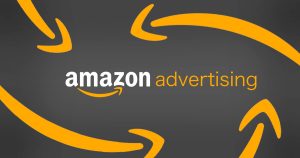
Amazon Advertising is a powerful programmatic advertising platform, offering advertisers access to a massive audience of over 310 million active customer accounts worldwide. This broad reach allows businesses to connect with potential customers on a global scale. One of its standout features is its sophisticated targeting options, which leverage Amazon’s extensive consumer data. Advertisers can target users based on search queries, past purchases, and browsing habits, enabling the creation of highly relevant and personalized ads.
The platform also provides a variety of ad formats, including sponsored products, brands, and display ads, each designed to serve specific business goals. These ad formats are particularly effective in driving sales, as they allow advertisers to promote their products directly to users actively searching for similar items on Amazon. This targeted approach increases the likelihood of conversions, helping businesses boost sales and achieve measurable results.
Another significant advantage of Amazon Advertising is its robust analytics and reporting tools. These tools give advertisers the ability to track campaign performance in real time and make data-driven adjustments to improve outcomes. Refining targeting and messaging based on performance insights, businesses can optimize their campaigns and maximize return on investment (ROI). With its combination of precision targeting, ad variety, and actionable insights, Amazon Advertising offers a comprehensive solution for businesses looking to grow.
5. AdRoll

AdRoll is a premier programmatic advertising platform that empowers businesses to create and manage campaigns across web, mobile, and social media channels with ease.
Renowned as an award-winning solution, AdRoll provides powerful tools to help businesses effectively reach and engage their target audiences. Here’s a closer look at the key benefits that make AdRoll an essential choice for advertisers.
1. Cross-Device Targeting
One of AdRoll’s standout features is its cross-device targeting capabilities. As consumers increasingly use multiple devices to browse the web, AdRoll enables advertisers to seamlessly reach users across platforms. This ensures a consistent and engaging user experience, regardless of the device.
2. Flexible Ad Formats
AdRoll offers a combination of ad formats, including display ads, social ads, and native ads. This flexibility allows businesses to select the formats that best align with their campaign goals, tailoring their approach to maximize impact.
3. Data-Driven Insights
AdRoll places a strong emphasis on data and analytics. With robust reporting tools, businesses can monitor campaign performance, analyze results, and optimize their ads for better outcomes. This data-driven approach helps refine targeting and messaging, ultimately boosting ROI and delivering measurable success.
4. Dedicated Customer Support
AdRoll also offers exceptional customer support. With dedicated account managers and knowledgeable support teams, businesses receive personalized guidance to ensure campaigns are executed smoothly and effectively. This hands-on support empowers companies to achieve their advertising goals with confidence.
In summary, AdRoll excels at delivering a comprehensive, data-driven, and customer-focused programmatic advertising experience. Its advanced features and dedicated support make it a powerful tool for businesses looking to enhance their advertising efforts and drive meaningful results.
6. The Trade Desk

The Trade Desk is a premier programmatic advertising platform that empowers businesses to effectively engage their target audiences and achieve their marketing objectives. One of its primary advantages is its extensive inventory, providing access to over 500 billion digital impressions daily across diverse ad formats and devices. This unparalleled reach allows advertisers to connect with potential customers more effectively.
In addition to its vast inventory, The Trade Desk excels in advanced targeting capabilities. Advertisers can customize campaigns using a range of criteria, such as demographics, interests, and user behavior, which allows them to present highly relevant and personalized ads. Furthermore, the platform offers powerful analytics tools that allow businesses to monitor campaign performance and make data-driven adjustments to optimize results, ultimately enhancing return on investment (ROI).
However, challenges exist for users of The Trade Desk. Its complexity and steep learning curve can be daunting for beginners, while high minimum spend requirements may be a barrier for smaller businesses. Additionally, limited transparency regarding ad placements and costs can complicate campaign optimization, raising concerns about accountability. Despite these drawbacks, The Trade Desk remains a formidable option for those looking to leverage programmatic advertising for their growth.
7. Xandr
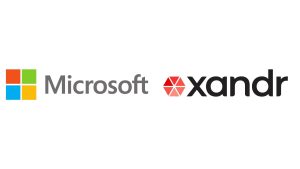
Xandr’s programmatic advertising services deliver significant advantages for advertisers, with advanced targeting capabilities standing out as a key highlight. By leveraging extensive consumer data, Xandr enables advertisers to target audiences with precision, using criteria such as demographics, interests, and behaviors. This level of granular targeting allows for the creation of highly personalized and engaging ads that resonate deeply with the intended audience.
Another standout feature is Xandr’s cross-device targeting. In today’s multi-device world, where consumers interact across smartphones, tablets, and desktops, Xandr ensures a seamless user experience by enabling advertisers to reach their audience across multiple devices and platforms.
Additionally, Xandr provides powerful reporting and analytics tools that give businesses clear insights into campaign performance. These tools empower advertisers to fine-tune their strategies, optimize messaging, and improve campaign outcomes, ultimately driving a higher return on investment (ROI).
In summary, Xandr’s programmatic services offer advanced targeting, seamless cross-device reach, and robust analytics, equipping businesses with the tools they need to connect with their audience effectively and achieve their advertising goals.
8. DoubleClick
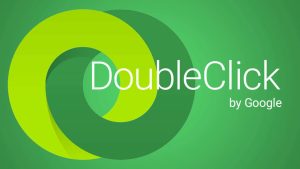
DoubleClick’s programmatic advertising services provide advertisers with essential tools and benefits to effectively connect with their target audiences. DoubleClick provides access to over 80 ad exchanges and connects with more than 700 premium publishers. This wide reach allows brands to connect with a diverse customer base across multiple platforms. Such accessibility enhances visibility and enables businesses to position their ads in reputable and trusted environments.
One of the platform’s standout features is its advanced targeting capabilities. Advertisers can pinpoint their ideal audiences by leveraging detailed data on demographics, interests, online behaviors, and geographic locations. This level of precision allows for the creation of highly relevant and personalized ads, ensuring that the right message reaches the right people at the right time. Such specificity can lead to higher engagement rates, better brand recall, and stronger customer connections.
In addition, DoubleClick supports advertisers with a suite of comprehensive reporting and analytics tools. These features provide in-depth insights into campaign performance, enabling businesses to evaluate key metrics such as impressions, clicks, conversions, and overall ROI. The platform also offers optimization tools that help advertisers refine their strategies in real-time, ensuring campaigns continually improve and deliver maximum impact.
Overall, DoubleClick’s programmatic advertising solutions empower businesses to reach their audience more effectively, enhance ad relevance through advanced targeting, and achieve their advertising objectives with robust analytics and optimization capabilities. Whether a business aims to boost brand awareness or drive specific actions, DoubleClick provides the tools needed to succeed in today’s competitive digital advertising landscape.
9. MediaMath
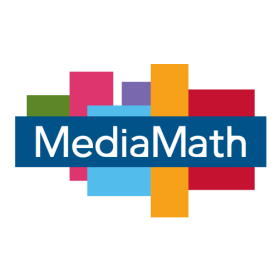
MediaMath’s programmatic advertising solutions offer powerful tools for advertisers looking to reach their target audience and achieve their marketing goals. With an AI-powered algorithm, MediaMath analyzes vast amounts of data in real-time, optimizing ad distribution to maximize engagement and conversion rates. Ads are delivered to the right audience, at the right time, in the right format—ensuring higher ROI for advertisers.
One standout feature is MediaMath’s advanced targeting capabilities. Leveraging key factors like demographics, interests, behavior, and location, advertisers can create personalized and relevant ads that resonate with their audience. This precision targeting helps drive better results and deeper connections with customers..
MediaMath also supports multiple ad formats, including display, video, mobile, and social ads. Each format is customizable and optimized for maximum impact, allowing businesses to tailor their campaigns to specific needs.
In summary, MediaMath’s programmatic advertising services provide robust AI optimization, advanced audience targeting, and versatile ad formats. These features empower businesses to connect with their ideal audience effectively, achieve higher engagement, and meet their advertising objectives.
10. Basis Technologies

Basis Technologies, previously known as Centro, is a leading programmatic display advertising platform designed to help marketers optimize ad performance and reach their target audience at scale. With advanced features such as real-time bidding, machine learning automation, and targeting technology, Basis Technologies simplifies digital advertising and maximizes ROI.
The platform provides access to multiple ad exchanges, demand-side platforms (DSPs), and data providers from a single, intuitive dashboard. By automating bidding, targeting, and creative optimization, Basis Technologies enables advertisers to seamlessly manage campaigns across multiple channels and devices, saving time and effort while delivering impactful results.
Key Benefits of Basis Technologies:
- Streamlined Campaign Management: Efficient tools for optimizing ad performance without the manual effort.
- Targeted Campaign Customization: Tailor campaigns based on audience demographics and interests for precise targeting.
- Powerful Reporting Insights: Access detailed metrics like ROI, CTR, and CPA through a sophisticated dashboard to track and improve performance.
- AI-Driven Optimization: Machine learning algorithms identify effective strategies and automate processes for better outcomes.
Marketers can leverage Basis Technologies’ robust reporting capabilities to gain actionable insights and refine their campaigns. By focusing on data-driven metrics, businesses can make informed decisions to enhance performance and profitability.
If you want to simplify your digital advertising efforts and boost your return on investment, Basis Technologies is the ultimate solution for managing programmatic ads effectively.
11. Choozle

Choozle is a programmatic display advertising platform designed to help businesses create and manage campaigns, gain valuable insights, and measure success with ease. Leveraging advanced real-time bidding technology, Choozle empowers companies to efficiently and effectively connect with their target audience.
The advantages of using programmatic display advertising with Choozle are significant. First, its automated process ensures ads are delivered exclusively to users most likely to engage with the product or service being promoted, boosting engagement while reducing cost per click (CPC). Furthermore, Choozle allows businesses to define precise targeting criteria, including location, demographics, interests, and more, ensuring the right message reaches the right audience at the right time. This tailored approach increases the likelihood of conversions and maximizes return on investment (ROI).
Another key benefit is access to robust analytics tools that provide deep insights into campaign performance and audience behavior. Through detailed reporting, businesses can track essential metrics such as click-through rates (CTR), cost per thousand impressions (CPM), CPC, reach, frequency, and impressions, all in real-time. This data enables companies to fine-tune their campaigns for better results or adjust strategies dynamically based on performance insights.
Programmatic display advertising with Choozle offers an efficient, data-driven approach to delivering highly targeted and impactful campaigns. With automated workflows, refined targeting capabilities, in-depth analytics, and diverse ad formats, businesses can maximize ROI while optimizing resource allocation. However, to fully harness these benefits, careful management of budget and data strategies is essential.
12. Simpli.fi
![]()

Simpli.fi is an innovative programmatic display technology that offers unparalleled benefits for digital marketers. By leveraging its advanced targeting capabilities, advertisers can reach the right audiences at the right time, minimizing wasted ad impressions and maximizing ROI. Additionally, Simpli. fi’s vast data set allows advertisers to gain unprecedented insight into how their campaigns perform across different sites and devices in real-time. This makes analyzing performance data easier and deciding how best to adjust ad spending.
Moreover, Simpli.fi is a leader in optimization technologies such as dynamic creative optimization (DCO) and machine learning algorithms that allow for automated campaign adjustments based on user feedback or other criteria. This helps ensure that campaigns always run at peak performance and maximize ROI. With Simpli.fi, advertisers can also take advantage of features such as lookalike modeling to target users similar to those who have already completed a conversion or interacted with an ad, providing even greater control over campaign reach and results.
Overall, Simpli.fi’s’ programmatic display tool offers a comprehensive solution for businesses looking to run successful digital advertising campaigns. Its ability to integrate with an array of data sources and optimize bids across hundreds of thousands of websites makes it an ideal choice for enterprises that must quickly reach their target audiences on a large scale.
13. Adobe Advertising
Adobe Advertising Cloud’s programmatic display platform offers a range of solutions to meet the needs of businesses of all sizes. It provides brand safety, visibility, and performance optimization capabilities, allowing advertisers to target customers with the right message. Adobe Advertising Cloud also allows for cross-platform targeting by leveraging its proprietary data management technology. This enables advertisers to reach users across multiple networks, such as Facebook, Google Ads, Twitter, and Snapchat. For those looking to maximize their ROI, Adobe Advertising Cloud can be used in conjunction with other marketing channels, including email marketing and search engine optimization (SEO).
In addition, Adobe Advertising Cloud utilizes advanced technologies such as machine learning and natural language processing (NLP) to optimize campaigns for maximum performance. This enables marketers to understand customer behavior better and deliver the right message at the right time. The platform’s data-driven insights also allow marketers to measure results, adjust tactics quickly, and make real-time, informed decisions.
In conclusion, Adobe Advertising Cloud provides advertisers with robust tools for creating successful display campaigns and achieving their marketing objectives. Its comprehensive capabilities make it an excellent choice for businesses of all sizes looking to maximize their return on investment (ROI). Additionally, its ability to leverage multiple networks and utilize advanced technologies like machine learning and natural language processing makes it an even more attractive solution for marketers who want to stay ahead of the competition. With Adobe Advertising Cloud, businesses can achieve maximum returns from their display campaigns.
14. Roku Advertising
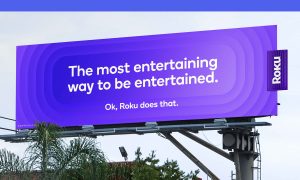
Roku Advertising’s programmatic display platform is an efficient and effective solution for advertisers seeking to reach their desired audiences. The platform provides a comprehensive range of audience targeting options, allowing marketers to identify and capture a highly customized selection of viewers. By utilizing advanced audience segmentation tools, including viewing habits and purchase history, advertisers can strategically position their ads in front of the most relevant audiences. This approach enables the creation of highly targeted campaigns, precisely aligned with their objectives, ensuring maximum impact and effectiveness.
For example, consider a travel company looking to promote its services. The company can go beyond simply targeting by geographic location or basic demographic data using Roku Advertising’s programmatic display platform. Instead, they can use advanced targeting features to reach potential customers most likely interested in their services. Additionally, the platform’s automated buying and optimization capabilities streamline the process for advertisers, enabling them to quickly set up campaigns and monitor performance metrics to refine their strategies.
In summary, Roku Advertising’s programmatic display platform is valuable for advertisers seeking to optimize their digital campaigns. The platform enables advertisers to deploy targeted campaigns efficiently while optimizing performance by providing powerful tools for audience segmentation and automated buying. This results in improved return on investment and a greater likelihood of success for advertisers across industries.
15. StackAdapt

StackAdapt is a leading programmatic display platform that provides effective digital marketing solutions for businesses of all sizes. By leveraging innovative ad-buying processes, StackAdapt enables advertisers to quickly identify and target their ideal customers using precise performance metrics and detailed analytics. This allows for real-time campaign tracking and optimization, significantly enhancing return on investment (ROI).
A notable success story involves Unilever, which utilized StackAdapt to create targeted campaigns that resulted in a remarkable 400% increase in ROI compared to traditional methods. Brands like Adidas and Honda have also reaped the benefits, effectively reaching their target markets through programmatic advertising. With its powerful tools and data-driven insights, StackAdapt is an invaluable resource for businesses looking to optimize their digital marketing strategies.
16. PubMatic
![]()
Pubmatic is a programmatic display platform that helps publishers monetize their digital inventory. In addition, their platform enables buyers to access efficient and effective media buying through real-time bidding, advanced targeting capabilities, and cutting-edge analytics.
Since opening its doors in 2006, Pubmatic has worked with many companies in the past, such as Expedia, Microsoft Advertising, and Volkswagen Group of America. They helped these companies develop strategies to reach their target audiences better using programmatic advertising. By utilizing Pubmatic’s’ technology, Expedia was able to increase its ROI by over 20%. Meanwhile, Volkswagen achieved an increase of 12% in ad click rate by targeting specific segments of users more effectively. Lastly, Microsoft Advertising experienced a 7% reduction in total cost per acquisition with Pubmatic.
Pubmatic is an excellent resource for publishers seeking to maximize their digital advertising efforts. Through its programmatic display platform, the company provided access to high-quality inventory and advanced targeting capabilities that can help companies reach the right audiences at the right time. With these tools in hand, companies like Expedia, Microsoft Advertising, and Volkswagen have achieved impressive ROI and ad click rate results. By partnering with Pubmatic, publishers can significantly improve their monetization strategy and increase revenue from digital advertising.
17. War Room
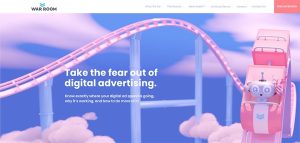
War Room is a programmatic display advertising platform that offers businesses an automated, cost-effective way to reach their target audiences. By leveraging advanced technology and artificial intelligence, War Room enables advertisers to deliver highly targeted digital display ads tailored to individual user interests. Its expansive network of publishers further simplifies the process of creating, managing, and optimizing online campaigns across multiple devices and platforms.
Trusted by some of the world’s biggest brands, including Coca-Cola, Chevrolet, and HP, War Room has become a leading provider of customized display advertising solutions. The platform consistently demonstrates its ability to meet the specific needs of its clients through innovative, data-driven strategies.
A notable example of War Room’s success is its contribution to Microsoft’s launch of Windows 10 in 2015. By utilizing War Room’s sophisticated targeting and optimization technology, Microsoft was able to execute personalized campaigns that effectively raised awareness for the operating system. With precise audience targeting and campaign optimization, War Room helped Microsoft achieve a successful launch, underscoring its role as a valued partner for high-impact advertising efforts.
Beyond its impressive portfolio, War Room is renowned for delivering exceptional customer service and support. Its team is dedicated to staying at the forefront of industry trends, continuously adapting to advancements in programmatic display techniques to ensure clients achieve optimal results. This unwavering commitment to innovation and excellence has positioned War Room as a leader in digital advertising, providing cutting-edge solutions tailored to the unique needs of every client.
18. SmartyAds
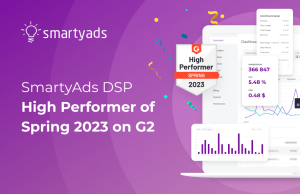
SmartyAds’ programmatic display platform offers a unique set of features designed to enhance digital advertising efforts for both advertisers and publishers. The core of this platform is Smarty DSP (Demand-Side Platform), which enables users to buy, sell, and manage advertising campaigns effectively in real-time and non-real-time environments. With its intuitive user interface and advanced capabilities, it caters to businesses of all sizes while providing various optimization techniques to maximize campaign performance.
One of the platform’s standout features is its real-time analytics and reporting tools, which allow users to measure the effectiveness of their campaigns. SmartyAds also offers custom targeting options, including geographic, demographic, behavioral, and contextual targeting, enabling advertisers to reach specific audiences with tailored messages. To further enhance flexibility, multiple payment options such as CPC (Cost Per Click), CPM (Cost Per Mille), and CPV (Cost Per View) ensure that businesses pay only for the results achieved.
In short, SmartyAds’ programmatic display platform serves as an effective solution for businesses looking to enhance their digital advertising strategies. With robust optimization techniques, an intuitive user interface, and versatile targeting options, advertisers can significantly improve their return on investment from online ad spend. Overall, SmartyAds is a standout option for companies aiming to achieve measurable success in their advertising campaigns.
Is Programmatic Display Advertising Right For You?
Programmatic display advertising platforms allow businesses to reach their target audience with precision, scale, and efficiency. By leveraging the power of data-driven insights and real-time bidding, businesses can optimize their advertising campaigns for better results and ROI. With so many programmatic display advertising platforms available in the market, it can be challenging for businesses to choose the right one for their needs. However, considering the 18 platforms highlighted in this article, companies can narrow their options and make informed decisions based on their advertising objectives, budget, and industry. Here are some questions to think about when selecting the right programmatic display agency:
- What are the targeting capabilities of the programmatic platform?
- How does the platform optimize campaigns and adjust ad placements based on performance?
- What is the platform’s level of transparency regarding pricing and ad placements?
- Does the platform provide access to quality inventory and ad formats that align with your campaign objectives?
- How does the programmatic advertising platform handle fraud detection and brand safety?
- Does the platform integrate with other marketing channels, such as social media and email marketing?
Remember that each programmatic advertising platform has unique strengths and weaknesses; what works for one business may not work for another. Therefore, testing and experimenting with different platforms is essential to find the right fit for your business. Whether you are a small business owner or a marketing manager at a large corporation, programmatic display advertising platforms can help you achieve your advertising goals. So, explore the options today and take your digital advertising game to the next level!
Get Your Campaigns Done Right The First Time With Propellant Media
In conclusion, Propellant Media is committed to empowering clients to maximize their programmatic marketing efforts through precise audience targeting and efficient ad placements. Our expertise in programmatic advertising enables us to harness advanced data analysis and automation to create customized advertising campaigns that significantly outperform traditional marketing methods.
With specialized services in programmatic display advertising, programmatic video advertising, programmatic audio advertising, and programmatic connected TV advertising, we ensure that our clients can effectively engage with their target audiences across various platforms. By leveraging our advanced targeting techniques, we drive better results and help clients achieve their specific marketing goals.
Choosing Propellant Media means trusting a leading digital marketing agency in Atlanta, GA, and Charlotte, NC, that is focused on delivering high-impact outcomes. Experience the power of programmatic advertising with us and take your marketing strategy to the next level.
Ready to supercharge your marketing with Propellant Media’s experts in programmatic, Paid Search (PPC), Geofencing, and Facebook Ads? Let’s show you what we can do—book a demo or drop us a line at hello@propellant.media!

